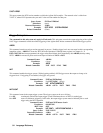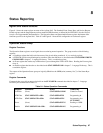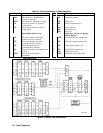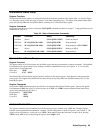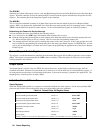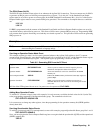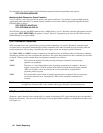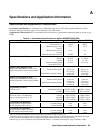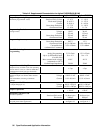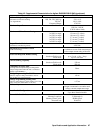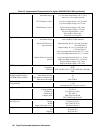
92 Status Reporting
Now when there is a service request, read back both the operational and the questionable event registers.
STAT:OPER:EVEN?;QUES:EVEN?
Monitoring Both Phases of a Status Transition
You can monitor a status signal for both its positive and negative transitions. For example, to generate RQS when the
Agilent SAS either enters the CC (constant current) condition or leaves that condition, program the Operational Status
PTR/NTR filter as follows:
STAT:OPER:PTR 1024;NTR 1024
STAT:OPER:ENAB 1024;*SRE 128
The PTR filter will cause the OPER summary bit to set RQS when CC occurs. When the controller subsequently reads the
event register (STAT: OPER: EVEN?), the register is cleared. When CC subsequently goes false, the NTR filter causes the
OPER summary bit to again set RQS.
SCPI Command Completion
SCPI commands sent to the Agilent SAS are processed either sequentially or in parallel. Sequential commands finish
execution before a subsequent command begins. Parallel commands allow other commands to begin executing while the
parallel command is still executing. Commands that affect trigger actions are among the parallel commands.
The *WAI, *OPC, and *OPC? common commands provide different ways of indicating when all transmitted commands,
including any parallel ones, have completed their operations. The syntax and parameters for these commands are described
in chapter 7. Some practical considerations for using these commands are as follows:
*WAI
This prevents the Agilent SAS from processing subsequent commands until all pending
operations are completed.
*OPC?
This places a 1 in the Output Queue when all pending operations have completed. Because it
requires your program to read the returned value before executing the next program statement,
*OPC? can be used to cause the controller to wait for commands to complete before
proceeding with its program.
*OPC
This sets the OPC status bit when all pending operations have completed. Since your program
can read this status bit on an interrupt basis, *OPC allows subsequent commands to be
executed.
Note The trigger subsystem must be in the Idle state in order for the status OPC bit to be true. Therefore, as far
as triggers are concerned, OPC is false whenever the trigger subsystem is in the Initiated state.
DFI (Discrete Fault Indicator)
Whenever a fault is detected in the Agilent SAS, it is capable of generating a FLT signal at the digital port (see appendix C -
Digital Port Functions). The source for the DFI signal can be any Questionable, Operation, or Standard Event status event
(see Figure 8-1).



